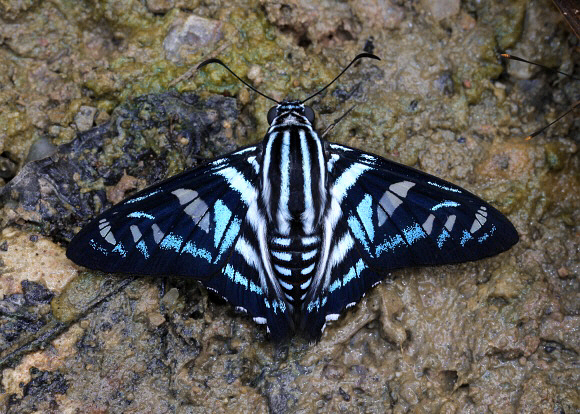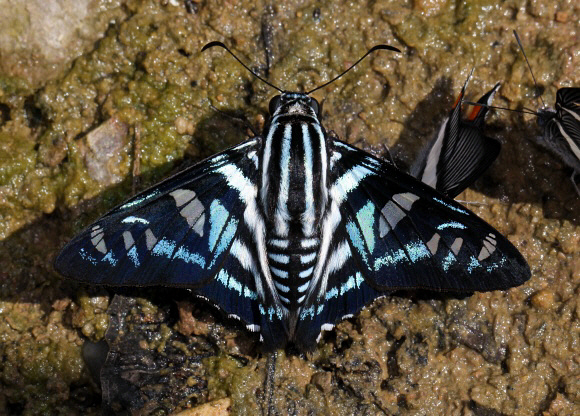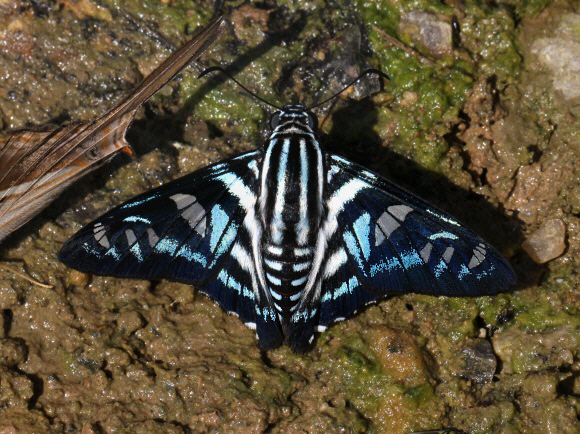
Introduction
The subfamily Pyrrhopyginae comprises 163 species, most of which are confined to the neotropics, although a few occur in Mexico, and a single species Apyrrothrix araxes reaches Arizona.
The Pyrrhopyginae are characterised by having a massive muscular thorax and a conical abdomen with compressed segments. The wings of most species are black, often with a metallic blue sheen, and are swept back, half covering the hindwings when the butterflies settle.
Several genera, including Jemadia, Elbella and Parelbella have a pattern of hyaline windows on the forewings, and are marked with stripes and bands of metallic blue and white. Many of these species are superficially very similar, but the shape and configuration of the hyaline areas and blue streaks is different in each species.
There are 5 Parelbella species, variously distributed from Mexico to Paraguay.
Parelbella peruana is endemic to Peru, and found only in the Chanchamayo valley, on the eastern slopes of the Andes.

Habitats
This species is found in primary rainforest at altitudes between about 200-1000m.
Lifecycle
The larvae of all Parelbella species are plump and dark reddish in colour, with narrow yellow rings around the abdominal segments. The head and tail are coated with long red setae. The remainder of the body is covered with shorter brown setae. The larva lives solitarily within a blister formed by folding over a segment of leaf. The foodplants include various Eugenia and Myrcia species. The pupa is reddish and covered in long setae. It is formed within a cocoon constructed of folded leaves sealed together with silk.
Adult behaviour
The butterflies are strongly associated with riparian habitats, and rarely seen away from rivers or streams. Males can be found either singly or aggregating with Phocides species, imbibing moisture from wet ground. They always settle close to the water’s edge. Unlike Jemadia they tend to feed in open sunlit situations.

